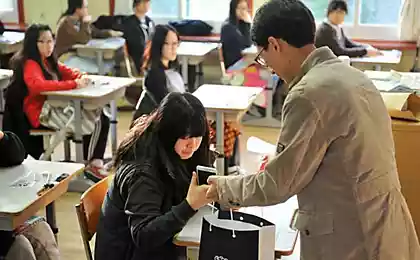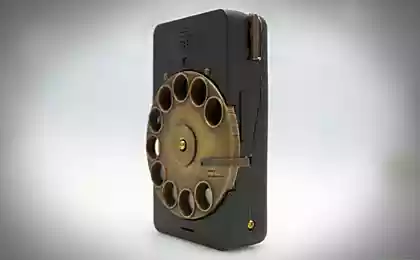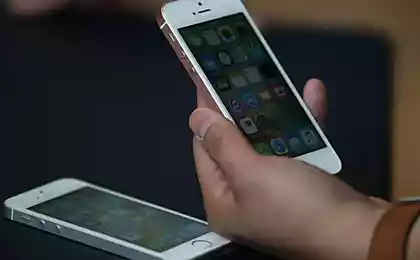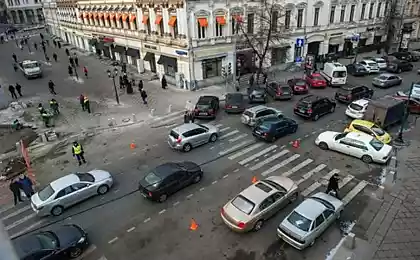566
As mobile phones injure pedestrians
They are directly under the car, crashed into trees and road signs, fall off curbs. Recognize them? Oh Yes, just when you need to call or send a message that pedestrians are distracted and get bruises, bruises, serious head injury or even die...

"Mad walkers", as they were called by the researchers from the PEW charitable Foundation and they are indeed a serious problem for the city and the state.
Pedestrian injuries related to cell phones in 2010 reached 35%, according to the ambulance in the United States. Other studies, done in 2012, argue that the distraction of mobile devices has led to at least 10 % of the injuries received by the pedestrians in the United States (about 78,000 injuries). The Federal system of Fatality noted a half-dozen pedestrians deaths a year, the perpetrators of "portable electronic devices" including phones and music players.

Some cities are trying to reduce speed limits to make traffic less dangerous for distracted pedestrians. Other experimented with penalties. But the result is only one, the number of accidents when using mobile devices is only growing.
In the United States predict a 250% increase in injuries to pedestrians that are distracted on your smartphone. The figure is impressive 144.5 million people.
As you know, smartphones are more distracting than the old mobile phones, because we look at them a lot more time.

Some cities are already starting to develop pedestrian areas, to reduce casualties among distracted pedestrians, noting that the vast majority of pedestrians killed on the streets due to excessive speed or through inattentive or incompetent drivers, not because they are looking at mobile phones. But the street is still not the place to look at the screens of mobile devices.
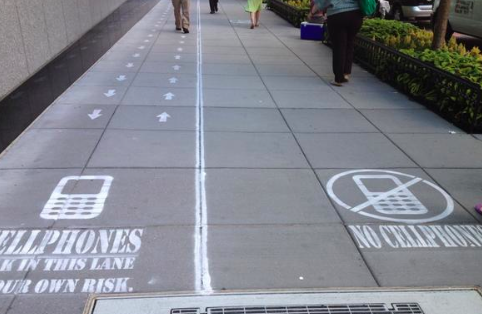
A researcher from the University of Buffalo, Dr. Dietrich Jehle, argues that today every tenth pedestrian injured during distracted walking, and this causes more accidents than a distraction behind the wheel, even if the severity of injuries is less.
"Talking on the phone distracts our attention, but texting is much more dangerous because you cannot see what is in front of you while concentrating on reading or typing," said Yale.

"Mad walkers", as they were called by the researchers from the PEW charitable Foundation and they are indeed a serious problem for the city and the state.
Pedestrian injuries related to cell phones in 2010 reached 35%, according to the ambulance in the United States. Other studies, done in 2012, argue that the distraction of mobile devices has led to at least 10 % of the injuries received by the pedestrians in the United States (about 78,000 injuries). The Federal system of Fatality noted a half-dozen pedestrians deaths a year, the perpetrators of "portable electronic devices" including phones and music players.

Some cities are trying to reduce speed limits to make traffic less dangerous for distracted pedestrians. Other experimented with penalties. But the result is only one, the number of accidents when using mobile devices is only growing.
In the United States predict a 250% increase in injuries to pedestrians that are distracted on your smartphone. The figure is impressive 144.5 million people.
As you know, smartphones are more distracting than the old mobile phones, because we look at them a lot more time.

Some cities are already starting to develop pedestrian areas, to reduce casualties among distracted pedestrians, noting that the vast majority of pedestrians killed on the streets due to excessive speed or through inattentive or incompetent drivers, not because they are looking at mobile phones. But the street is still not the place to look at the screens of mobile devices.

A researcher from the University of Buffalo, Dr. Dietrich Jehle, argues that today every tenth pedestrian injured during distracted walking, and this causes more accidents than a distraction behind the wheel, even if the severity of injuries is less.
"Talking on the phone distracts our attention, but texting is much more dangerous because you cannot see what is in front of you while concentrating on reading or typing," said Yale.




